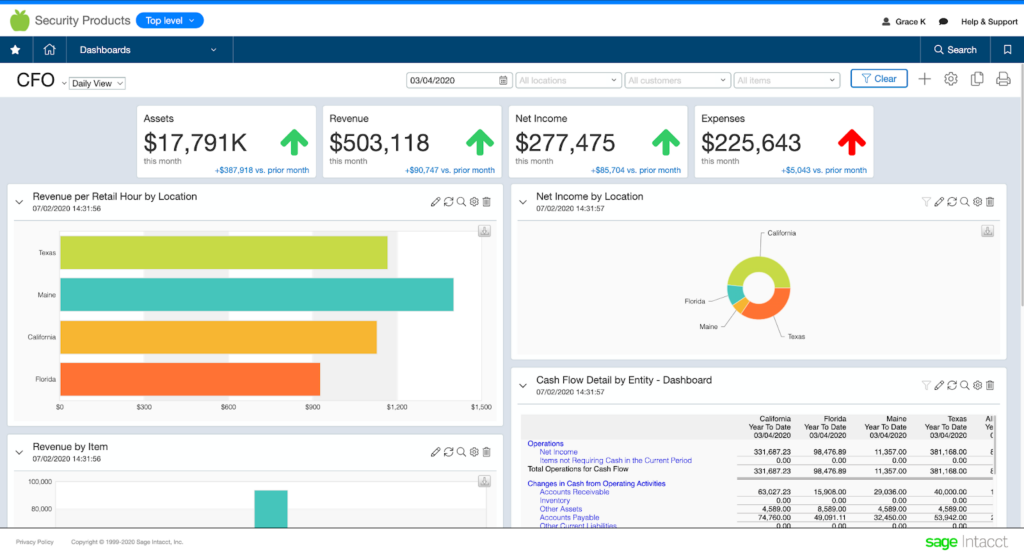Technology & Innovation
How to build a winning revenue operations strategy
The Complete Guide to Revenue Operations. Discover what revenue operations is, why SaaS leaders are adopting it, and how to create a RevOps strategy.

For SaaS finance organizations, it’s not enough to make the sale and call it a day. The complex and ever-evolving nature of SaaS recurring revenue means that finance teams must build an intelligent, comprehensive system to optimize revenue cycles and workflows. In other words, a revenue operations strategy needs to be created and implemented.
SaaS CFOs who invest the necessary time to hone this aspect of their department can expect to be well-rewarded. Everything from your revenue retention to MRR expansion and customer experience can be improved by devoting attention to your revenue operations.
This digital guide will show you why that’s the case and give you actionable strategies for optimizing your revenue processes and systems.
The complete guide to revenue operations
SaaS finance executives must recognize the critical link between revenue operations and organizational profitability. This guide to revenue operations for SaaS finance leaders should help you understand the close relationship between RevOps and SaaS profitability.
First, we’ll answer the question, “what is revenue operations?” After that, we’ll analyze in detail why companies are waking up to its crucial role in their success.
What is revenue operations (RevOps)?
Revenue operations, or RevOps, is a strategic approach to aligning finance, sales, marketing, and customer success teams with the goal of driving revenue growth. Revenue operations is a holistic approach to managing and optimizing revenue-generating processes across the entire customer lifecycle. It involves breaking down the silos between teams to create a unified revenue-generating machine. By streamlining processes, improving data visibility, and aligning teams around common business goals, RevOps helps companies improve efficiency, reduce costs, and increase revenue.
Finance, sales, marketing, and customer success teams have an indispensable role to play in a firm’s cash flow dynamics. These responsibilities include:
1. Marketing: Marketing plays the crucial role of bringing in new leads and warming those leads up through effective messaging.
2. Sales: Sales is the next step in the journey, helping to close leads that need further convincing before they convert.
3. Customer success: Once leads have become customers, the customer success team ensures that your users have the smoothest possible experience with your products and overall company.
4. Finance: The finance team is responsible for efficiently and reliably handling, reporting, and forecasting revenue. Revenue operations software helps finance professionals accomplish all of this in a fraction of the time it would take if they relied on manual workflows.
Below we’ll take a closer look at why more SaaS companies than ever before are implementing revenue operations strategies–and what you stand to gain by developing one yourself.
Why are companies adopting RevOps?
The adoption of revenue operations has been growing rapidly in recent years, and for good reason. By aligning teams around the common business goal of revenue growth, companies can achieve better results and drive sustainable growth.
Several positive things start to happen when systems are put in place to streamline operating revenue in your company. Some of the benefits of adopting RevOps include:
- Data is organized and centralized: Revenue operations software leverages a single source of truth (SSOT). An SSOT gives different departments and team members immediate access to the data they need for their unique role in RevOps.
- You’ll have regulatory peace of mind: Revenue operations for SaaS companies necessitates abiding by strict accounting regulations–GAAP, ASC 606, and IFRS 15. Revenue operations software will enable you to align instantly with any regulatory changes that might arise.

- You’ll scale faster and more smoothly: If SaaS companies scale too rapidly without having sustainable and organized processes around revenue, they’ll quickly hit a point of diminishing returns. An effective RevOps strategy will help organizational growth stay what it should be–an unmitigated positive.
Now that you know what RevOps is and why it matters, let’s go into some concrete steps you should take.
Three steps to create a revenue operations strategy
The most successful revenue operations strategies involve three components: sales, reporting, and forecasting. To build a winning revenue operations strategy, you need to follow these three steps:
Step 1: Hone your sales funnel to optimize the customer journey
The first step in creating a revenue operations strategy is to establish a function-specific structure that aligns with your business goals. This involves identifying the key revenue-generating functions in your organization, such as sales, marketing, and customer success, and defining the processes and metrics that drive revenue growth in each function within your sales funnel.
Do everything you can to identify weak points in your sales funnel and take corrective action. As we mentioned earlier, sales represents one of the primary customer touch points (along with marketing). The more thoroughly you optimize your sales funnel, the more quickly leads will become buyers.
Step 2: Set up role-based dashboards for real-time insights
The second step involves identifying the roles and responsibilities of the revenue operations team, defining the key performance indicators (KPIs) for each role, and then equipping them with role-based dashboards that provide real-time data.
As your RevOps team expands and its informational needs grow, you should organize each team leader’s metrics and data around their unique roles and responsibilities.

Role-based dashboards are customized screens that give your key decision-makers instant readouts on all the metrics they need to make informed revenue operations choices.
Step 3: Automate your forecasting with revenue operations software
The final step is to select revenue operations software that can support your revenue operations strategy effectively. This involves evaluating accounting and cloud ERP software and choosing one that best aligns with your business needs, specific revenue operations processes, and metrics.
Automated reporting and forecasting revolutionizes your relationship with your revenue by letting you know your financial outcomes ahead of time. Revenue operations should be about looking ahead and steering your company toward the best possible future.
Function-specific revenue operations structure
As mentioned above in the first step to create a revenue operations strategy, establishing a function-specific RevOps structure that aligns with your business goals is crucial for driving revenue sustainable revenue growth. You should build a dedicated revenue operations team as soon as your corporate infrastructure can support it. Depending on your company’s current growth stage, your team’s scale may vary.
Even if you lack the resources to build an entire RevOps team, cloud-based accounting software can still help you carry out a winning strategy around revenue operations. If you do have a team in place, though, automated software can help you unlock exponential productivity.
How are RevOps teams structured?
Revenue operations team structure
In general, RevOps teams are led by a Chief Revenue Officer (CRO) and include roles such as:
- Vice President of Sales: Generally, this role and its reporting roles will oversee sales operations, enablement, and business development.
- Vice President of Marketing: This role and its reporting subordinates will oversee operating revenue associated with marketing initiatives like social media and content marketing campaigns, in-person events, digital webinars, and more.
- Vice President of Customer Success: This role is critical for SaaS companies looking to optimize their operating revenue. It’s essential in helping organizations provide a seamless customer experience from beginning to end. Otherwise, churn will spike and your NDR will suffer.
- Supporting roles: Supporting RevOps positions involving data analysis, tech and IT, and other components can be extremely helpful if your firm has the resources to spare.
No matter how much bandwidth you can devote to building out your RevOps team, there’s one key ingredient you should never be without.
Revenue operations software tailored to fit your SaaS business
Revenue operations software is increasingly prominent in many SaaS companies’ tech stacks. Your SaaS tech stack for 2023 is not complete unless it makes sizable provisions for RevOps optimization.
Sage Intacct helps SaaS organizations meet the complex demands of maintaining and generating reliable positive cash flow.
Maximizing revenue growth
In today’s competitive business environment, implementing a RevOps strategy can give businesses a competitive edge and drive revenue growth. Therefore, we encourage you to invest in a winning strategy to optimize your operations and achieve your goals.
Sage Intacct can help SaaS companies optimize revenue operations with end-to-end automation. With something as important as revenue, why would you risk leaving anything to error-prone manual workflows?
Luckily, you don’t have to. This case study shows how we recently helped Nasuni, a leading file data services company, boost ACV while increasing gross margin 10%.







Ask the author a question or share your advice